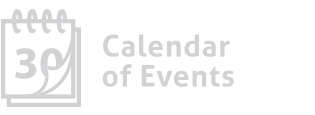In August 1910, the highlight of the Blue Grass Fair was the first aircraft flights[1] in Lexington and Central Kentucky. Glenn H. Curtiss, of the Curtiss Aeroplane Company, demonstrated his Curtiss Aeroplane at the fair.[i] The fair was held on the grounds of the Kentucky Association’s racetrack, with the hangers and runway located in the infield.
On Sunday, August 6, 1910, J. A. D. McCurdy made two test flights with a Curtiss Aeroplane. McCurdy was a Canadian aviator, hired by Glenn H. Curtiss to operate his flying machine. The first flight was at 5:50 pm and circled the track at grandstand height. The second flight started at 6:10 pm after a change in propellers. The flight was timed at 29 seconds for a quarter mile (31 miles per hour).[ii]
The prior week, the machine arrived in Lexington “in knock-down order” and was assembled in the infield. McCurdy and two mechanics reassembled the plane. The plane crew included Albert Cook (engine mechanic), Charles Hillman (frameman) and Frank S. Tilllman (road manager). A large tent in the center of the infield served as a hanger. In the infield, a grass landing field of 200 feet by 50 feet was prepared (from the first turn toward the timer’s stand). The plane was built of ash and bamboo, connected with steel rods and wires. The wing was covered in oiled canvass. The plane was powered by an eight cylinder engine. The landing gear was three bicycle tires.[iii]

The first public flight occurred on August 7, 1910, the local newspaper reported:
“At 3:45 the aeroplane corps rolled the wonderful machine in which Mr. McCurdy is to make his daily flights, onto the infield occupying the shaved plot about 200 feet long at the eastern end of the track oval. Quickly adjusting the machinery and seeing that every part was in working order, Mr. McCurdy mounted his seat, the engine was set awhirl and ten seconds later the singular looking air craft was scudding down the field at lightning speed.”
“As McCurdy approached the timers stand, the machine took a graceful unshoot and in a twinkling was off towards the West like a great bird, carrying its human freight at tremendous speed.”
“Reaching the western end of the grounds the operator shifted the gear and the machine began to turn gracefully back towards the starting point, almost touching the ground at one point, but later arising and circling back to the starting point, while the people in the grandstand applauded.”
McCurdy made three flights the first day of the fair, flying between 75 and 150 feet. Over the rest of the week, weather permitting, McCurdy made daily flights.[iv]

Aviation Meet:
Between June 3 to June 9, 1912, the Lexington Commercial Club sponsored an Aviation Week, at the Kentucky Association’s track in Lexington. This was the first large scale exhibit of aircraft in Kentucky. The week was co-sponsored by Berger Aviation Company, the Elks of Lexington, Lexington Automobile Club and Blue Grass Motorcycle Club. The schedule included two daily flights, at 2:30 pm and 3:50 pm. In between flights, a number of automobile and motorcycle races were held on the track. Nightly, a fireworks display titled “Last Days of Pompeii” was set off.[v]
Five aircrafts participated during the week, including three Wright Biplanes, a Columbia Biplane and a Moisant Monoplane. The planes were flown by Aviators Paul Peck[2], Eugene Heth, Leonard W. Bonney, Oscar Brindley and J. Hector Worden, respectively. The track’s infield was used for the aviation field, with tent hangers erected on the southeast corner.
On opening day, Bonney had the longest flight at 53 minutes and Brindley climbed to over 7,000 feet. During the week, the weather deteriorated with high winds that restricted flying (all flying was canceled on Friday). On June 6, Bonney crashed during takeoff, seriously damaging his Wright Biplane. On June 7, the engine on Heth’s plane failed (forcing him to glide to a landing) and Brindley was forced to land near the reservoir (because of high winds). Both aircrafts were also Wright Biplanes. On June 8, Peck in a Columbia Biplane won a silver cup for closest landing within 25 feet, 11 inches of the mark. The cup was donated by the John D. Moore Tobacco Company.
World War One:
Around the First World War, several airplanes operated from a landing field off Richmond Road, past the city limits.[vi] At the time, airplanes operated from an open pasture, landing and taking off into the wind.
In 1919, the army operated a flying circus to promote the sale of Victory Bonds. The circus used surplus planes from the French Italian, German and American air forces. The circus staged sham battles, aerial acrobatics and stunts for the public. In Lexington, the circus operated during April 1919 from Hinata Farm, owned by Clarence LeBus, on Russell Cave Road (4 miles from Lexington). After the stunts, 22 of the larger purchasers received rides in the Victory Planes.[vii]
In January 1920, the Lexington Board of Commerce began investigating the establishment of a “commercial aviation station.” The Board hosted several representatives from aviation companies who visited Lexington reviewing the city as a fuel stop and connections to Cincinnati. Over the next year, a series of meeting were held without results.[viii]
[1] The Wright Brothers first successfully flew the first aircraft in December 1903.
[2] Peck was the holder of the World’s Record for Endurance with a flight of 4 hours, 23 minutes and 15 seconds.
[i] Lexington Leader, August 6, 1910, page 1, column 5 and August 7, 1910, page 1, column 4.
[ii] Lexington Leader, August 6, 1910, page 1, column 5 and August 7, 1910, page 1, column 4.
[iii] Lexington Leader, August 6, 1910, page 1, column 5 and August 7, 1910, page 1, column 4.
[iv] Lexington Leader, August 8, 1910, page 1, column 2 and Lexington Herald, August 8, 1910, page 1, column 7.
[v] Lexington Leader, May 23, 1912, page 4, columns 2-3, June 2, 1912, Section 4, page 1, column 1-7, June 3, 1912, page 1, column 1-2, June 4, 1912, page 1, column 7, June 5, 1912, page 1, column 7, June 6, 1912, page 1, column 7, June 7, 1912, page 1, column 1-2, June 8, 1912, page 1, column 6-7, June 9, 1912, page 1, column 4 and June 10, 1912, page 7, column 4.
[vi] Lexington Herald Leader, May 19, 1963, page A-19, columns 1-7.
[vii] Lexington Herald, April 23, 1919, page 1, column 1.
[viii] Lexington Leader, January 4, 1920, page 1, column 4 and Lexington Herald, October 7, 1920, page 14, column 1.




